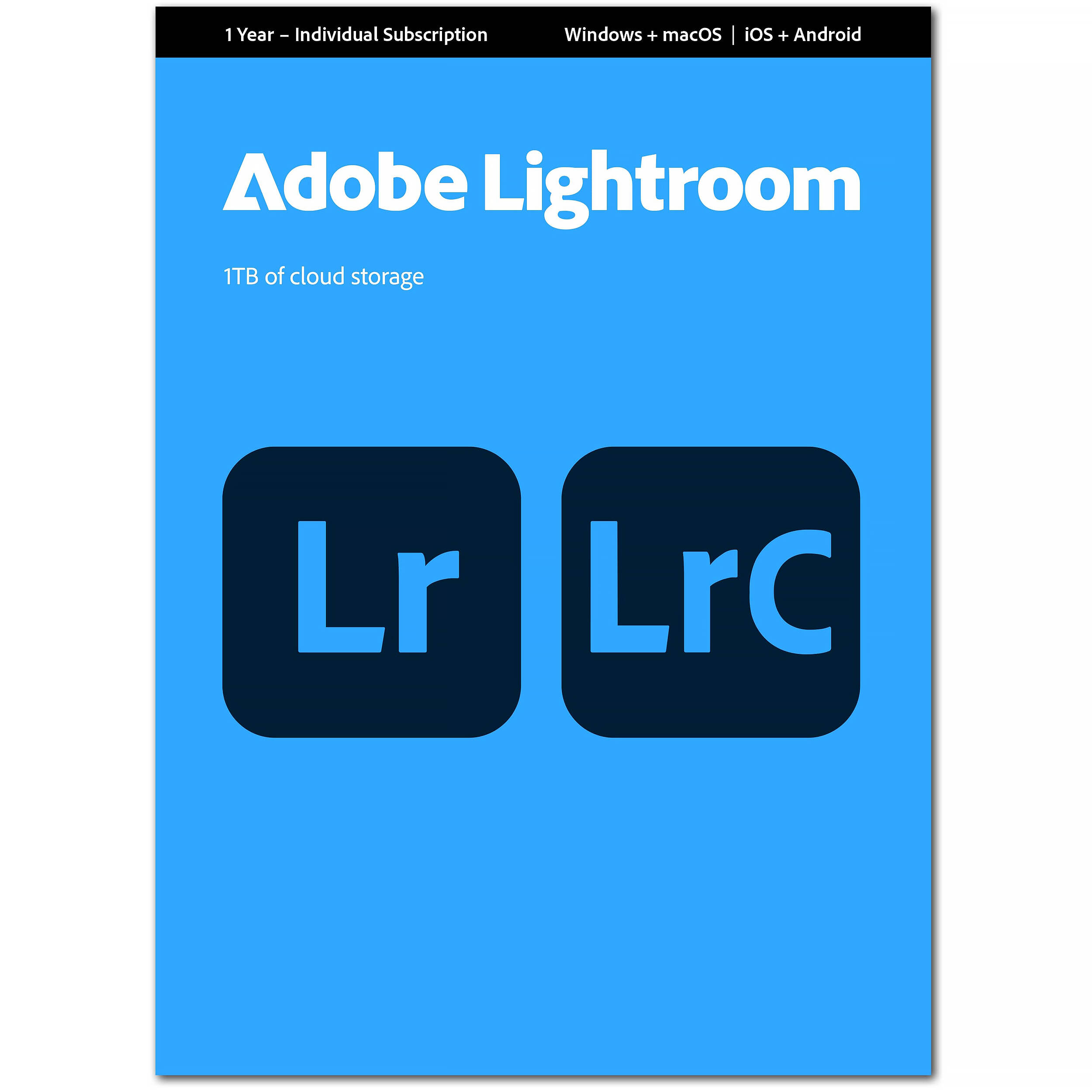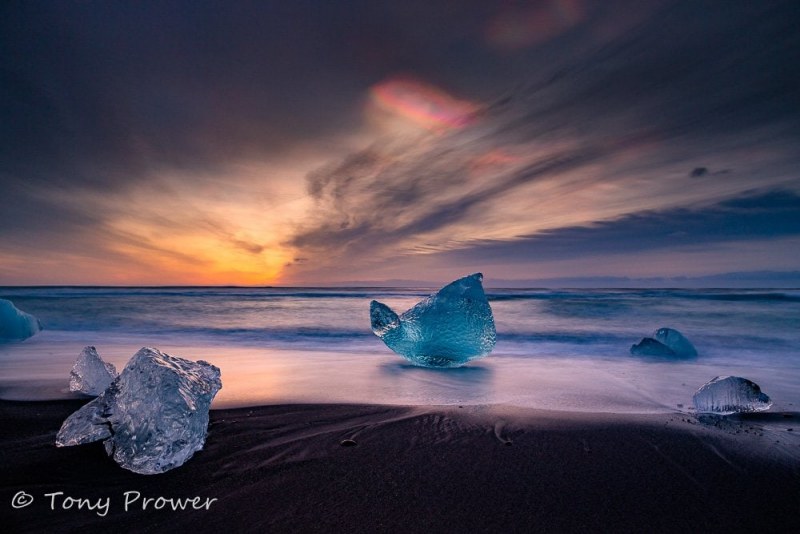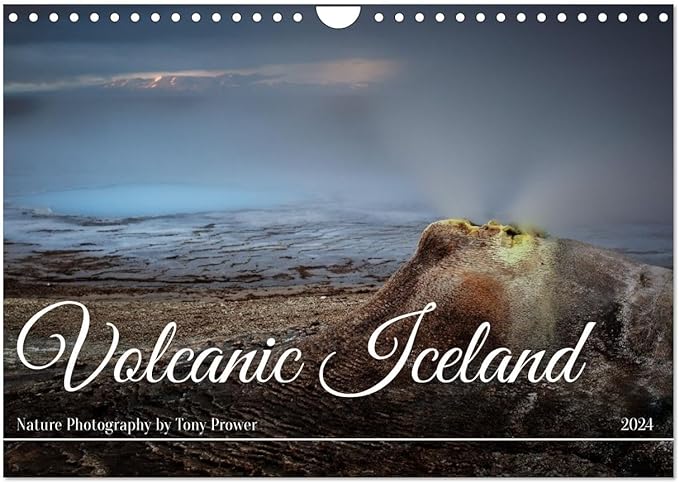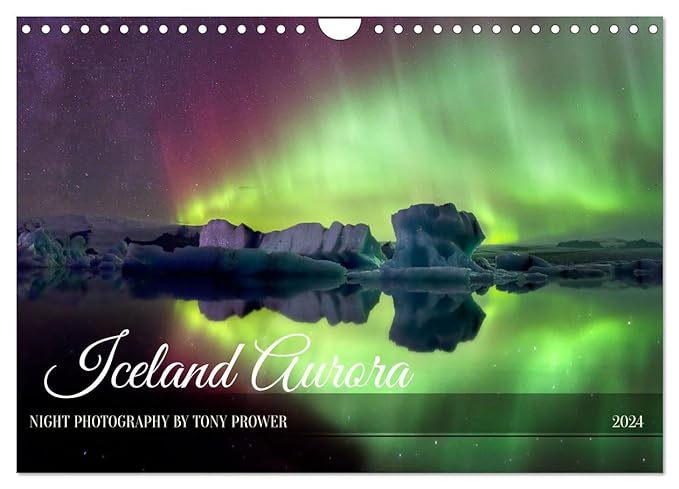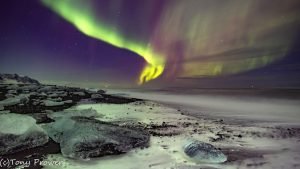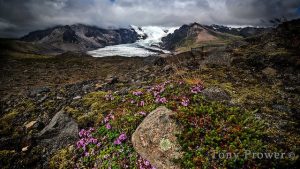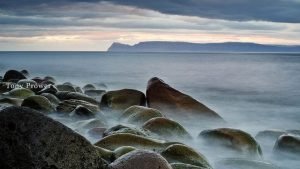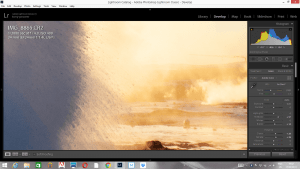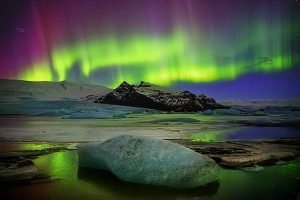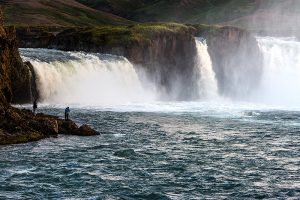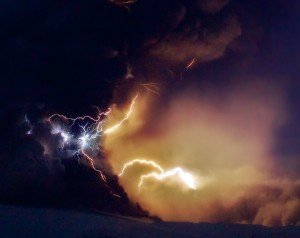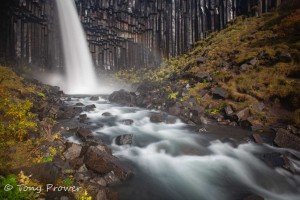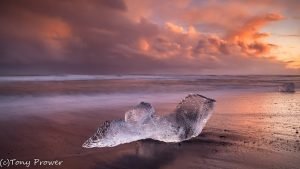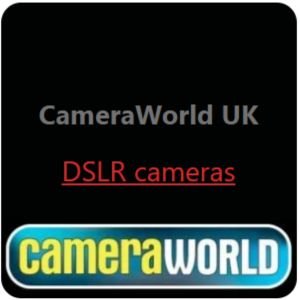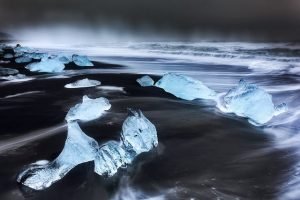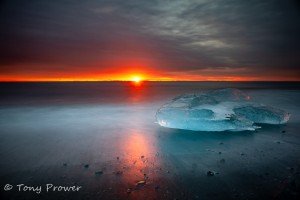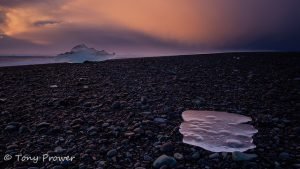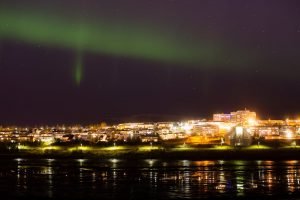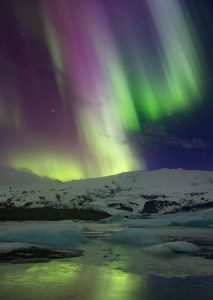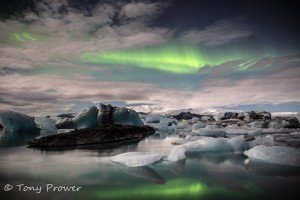Taken on January 24th, 2020
Location: Jökulsarlon & Diamond Ice beach
- Canon EOS 5D Mark III
- EF24mm f/1.4L II USM
- ƒ/8.0 24.0 mm
- iso 400
Background
Jökulsarlon’s Diamond Ice Beach was the main focus of my winter workshops. The itinerary is designed so that we are never far from the Glacier Lagoons for the best part of the trip. This is because Icelandic weather can be very chaotic and can surprise you at any moment. If you have your camera to hand, t’s great when you get an amazing display of these even rarer Nacreous cloud formations. It’s even better when you have the choice of a glacier lagoon or ice beach as the setting. Either way you have a unique glacier landscape to play with. The lagoon side has mountains that break the horizon, which could be useful because the nacreous clouds are so high. The beach side had a better buildup of colours from the impending sunrise.
Composition
I was trying to triangulate the 3 main subjects. The middle iceberg was a bit too close to the center but getting closer to the nearest piece of ice allowed me to form a triangle. It was important to be a few meters from the ice, so that I could include more sky with them.
Focal length
For this Iceland landscape photo, I am using my Canon EF 24mm f/1.4 L. It is a prime lens and very sharp at f/8. I used my 24mm Prime lens for 80-90% of my nature photography in Iceland. I feel that 24mm is the truest representation of your ‘whole vision’.
Aperture
I am using f/8 as a quality and time trade off with iso 400. f/8 is more than enough to cover the ice in front of me and to give a nice quality sharpness where it matters. My focus ring is set to f/11 hyper focal mark which means that my focal point favours the foreground slightly. This bias is not noticeable in the image, it just made me feel better.
Magic Cloth
This was a long long exposure because I wanted to gain control over the sky with a Reverse Magic Cloth Technique. My shutter speed was 13 seconds. + 2 stops compensation (+/-). This gave e extra time reverse the cloth upwards over the lens and then finish the exposure with some dodging on the ice and beach. A reverse cloth was necessary because the brighter part of the sky was near the horizon so the top part of the sky needed more exposure to have any post-processing control.
Post Processing
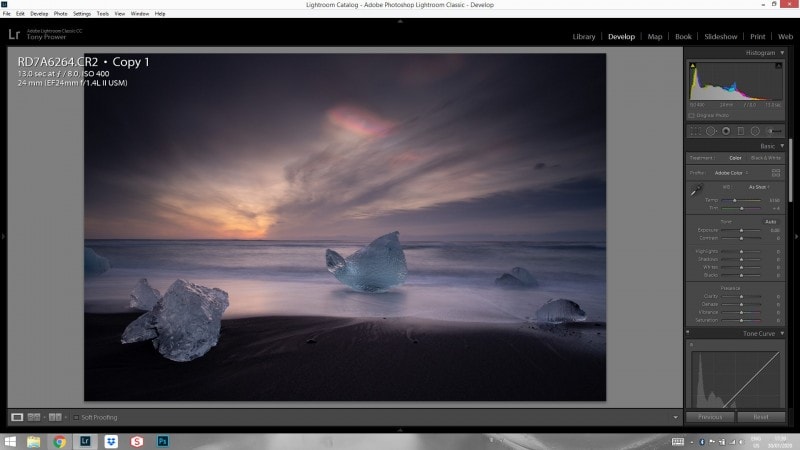
This Arctic, coastal scene was processed in Adobe Lightroom. As you can see from the un-processed image, the photo is adequately exposed with an insignificant amount of clipping in the shadows.
I then used Lightroom’s graduated filter to reduce the contrast and levels in the sky and to increase contrast an clarity in the foreground. In the whole image settings, I boosted shadows, reduced highlights and added de-haze.
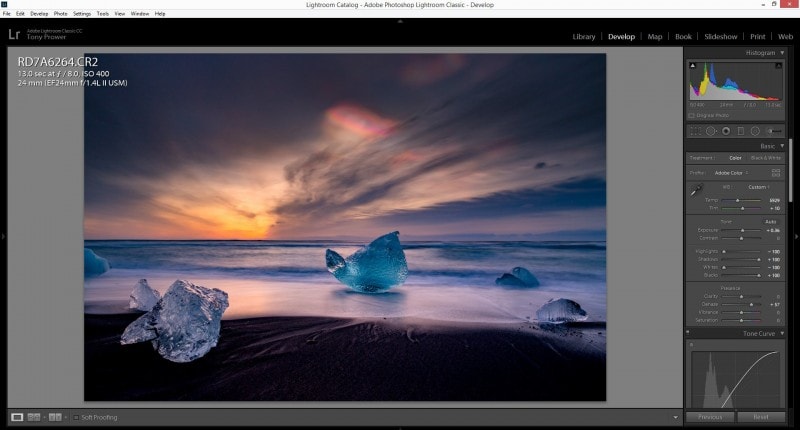
Side-by-side you can see the effect of the processing.
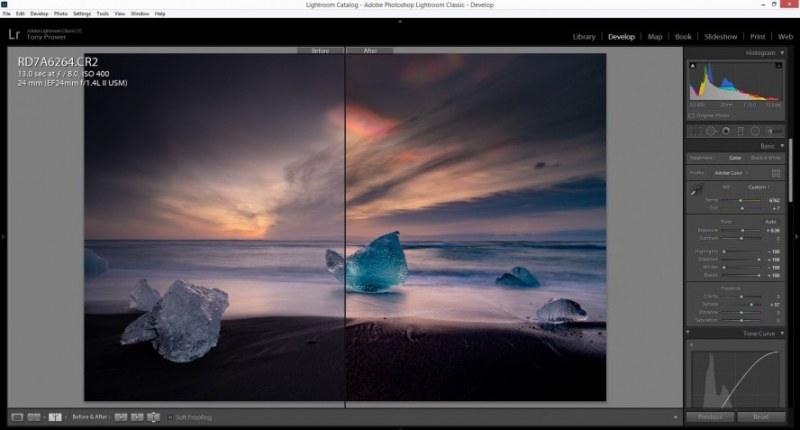
Adobe Creative Cloud Photography Plan
with 20GB Cloud Storage (under $100 USD)
